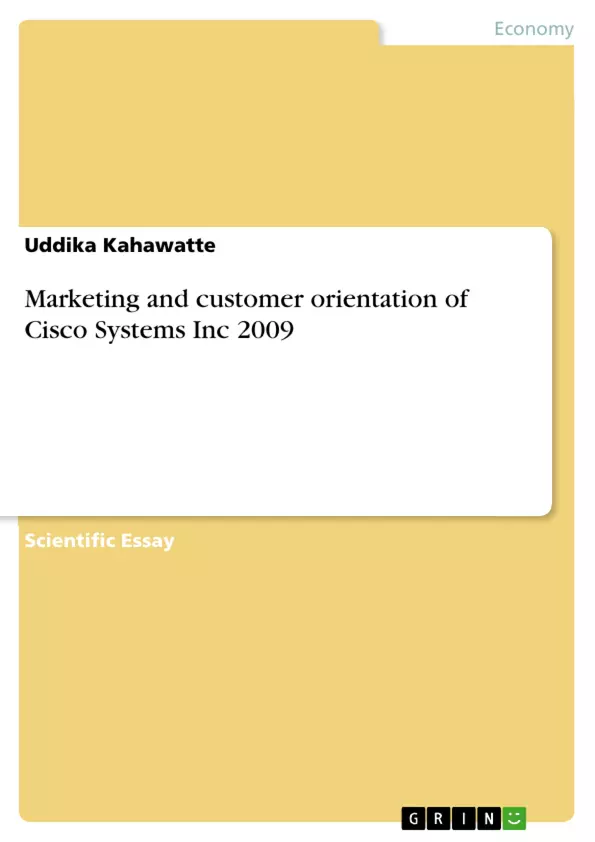Mass Collaboration, Virtual Communities, Web2.0 and Telepresence are a few buzz words that follow the new tag line - “welcome to the human network: changing the way we work, live, play and learn” - from one of the world’s biggest networking dominators, Cisco Systems, Inc. Its CEO’s statement, by the end of (once again) a thriving Q1 FY2010 “Cisco’s strategy is based on catching market transitions—the market transitions that affect our customers”, may also imply that the company is confidently leading the market while driving its customers’ future needs.
Inhaltsverzeichnis (Table of Contents)
- Company overview
- The market
- From the bridge-in-a-box to DNA - the Cisco brand
- Segmentation, targeting and going global
- Into the human network - the promotion
- Innovation: the power behind strategy
Zielsetzung und Themenschwerpunkte (Objectives and Key Themes)
This text presents an analysis of Cisco Systems, Inc. and its successful marketing and operations management strategies. The document explores how Cisco has achieved its dominant position in the networking market, emphasizing the role of customer centrality, innovation, and global expansion.
- Cisco's evolution from a start-up to a global networking leader
- The company's focus on customer satisfaction as a key differentiator
- Cisco's strategies for segmentation, targeting, and internationalization
- The role of innovation and the Emerging Technology Group (ETG) in driving Cisco's success
- The impact of Cisco's "human network" marketing strategy
Zusammenfassung der Kapitel (Chapter Summaries)
- Company overview: This section provides a brief history of Cisco Systems, Inc., outlining its founding, initial product offerings, and growth to become a market leader in networking and internet equipment.
- The market: This chapter examines the competitive landscape within the communications equipment market, highlighting key players, suppliers, and end users. It also explores the factors influencing competition, such as the diversification of products and the increasing influence of IT business partners.
- From the bridge-in-a-box to DNA - the Cisco brand: This section delves into the development of Cisco's brand image, showcasing how the company has transitioned from a hardware-focused provider to a brand synonymous with networking expertise, customer centrality, and technological innovation. It highlights the key role of online platforms and customer support in shaping the brand’s value.
- Segmentation, targeting and going global: This chapter examines Cisco's segmentation strategy, exploring the company's diverse product and market segments. The focus then shifts to Cisco's internationalization journey, analyzing its entry into global markets, particularly its focus on South Asia and the Middle East.
- Into the human network - the promotion: This section explores Cisco's shift in marketing approach, emphasizing the "human network" concept and its impact on the company's promotional efforts. It highlights the importance of online collaboration solutions and the company's efforts to target a broader customer base beyond traditional tech-savvy users.
Schlüsselwörter (Keywords)
The text focuses on key themes such as networking, customer centrality, brand building, innovation, global expansion, segmentation, targeting, marketing strategies, and the role of emerging technologies in shaping the IT landscape. The document also highlights the significance of online collaboration platforms, telepresence, and the human network concept in contemporary business models.
- Citar trabajo
- Uddika Kahawatte (Autor), 2009, Marketing and customer orientation of Cisco Systems Inc 2009, Múnich, GRIN Verlag, https://www.grin.com/document/148158



